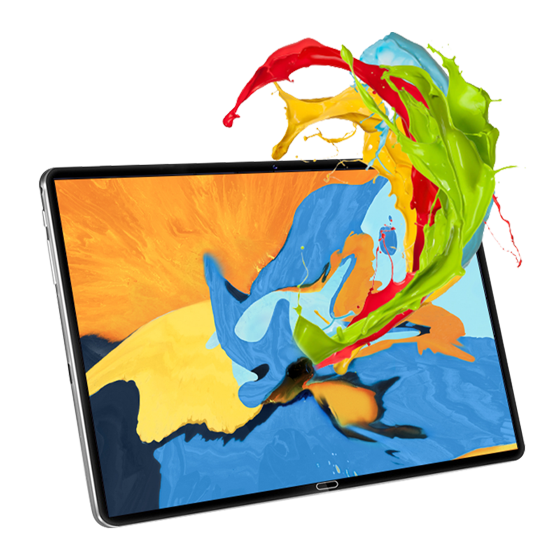3D screen monitors have evolved from niche products to become one of the mainstream viewing and entertainment devices in 2025. 3D manufacturers use unique algorithms and even AI to drive product upgrades, high-density lenses, and improved stereo tracking to provide immersive 3D visuals. Whether you want to use it for gaming, design, or digital signage, we recommend that you take a closer look at our 7 recommendations to help you better choose the best option for you.
1. Performance Metrics for 3D Screen Monitors
Resolution
High resolution is essential for detailed 3D imagery. The current standard for flagship 3D screen monitors is 4K (3840×2160), delivering sharp depth cues and reducing screen-door artifacts.
Refresh Rate
A high refresh rate ensures smooth stereoscopic transitions and reduces motion blur. Modern 3D screen monitors boast 165 Hz at 4K for active-shutter systems and up to 500 Hz at QHD for OLED gaming screens.
Brightness and Contrast
Brightness and contrast directly affect 3D depth perception. A baseline of 300 cd/m² (nit) and 700:1 contrast ratio is recommended, especially for autostereoscopic (glasses-free) displays, which typically lose light through lenticular arrays.
2. 3D Technology Types for3D Screen Monitors
Autostereoscopic (Glasses-Free)
Autostereoscopic monitors use lenticular or parallax-barrier layers to direct separate images to each eye, eliminating glasses. E3D custom-made 3D display employs eye-tracking stereo cameras and a lenticular overlay, delivering responsive glasses-free 3D for gaming and design.
Active Shutter
Active-shutter systems alternate left/right eye frames in sync with battery-powered glasses. They offer full-resolution per eye, accurate color, and high contrast—ideal for home theaters and professional visualization.
Polarized (Passive)
Passive polarized 3D uses inexpensive glasses and two simultaneous images with orthogonal polarizations. While more comfortable for group viewing (e.g., conference rooms, cinemas), brightness typically drops by 50% compared to 2D.
3. Size and Viewing Distance for 3D Screen Monitors
Size Selection
- Professional/Office: 24–27″ balances desk space and pixel density.
- Home Entertainment: 32–43″ offers cinematic immersion.
- Commercial/Exhibit: 49″+ widescreens suit digital signage and shared spaces.
Viewing Distance
Optimal viewing distance scales with diagonal size. A common guideline is 1.5–2.5× the screen diagonal (in meters) to maximize depth without eye strain.

4. Connectivity and Compatibility of 3D Screen Monitors
Port Types
To drive high-bandwidth 3D at 4K/165 Hz or greater, look for HDMI 2.1 (48 Gbps) and DisplayPort 1.4/2.1 (32 Gbps+) inputs.
Device Compatibility
Confirm compatibility with your graphics card, console, or playback device. NVIDIA 3D Vision users often require DVI-D or dual-HDMI setups due to driver constraints.
5. Brands and After-Sales Service for 3D Screen Monitors
Brand Options
You can choose big brands such as Samsung Odyssey 3D monitor, EIZO’s niche professional 3D monitor, or LG’s OLED gaming monitor product line. These are big brands with guaranteed quality and after-sales service. Of course, if you are worried about the price, you can consider E3D.
E3D Meta: With many years of experience in glasses-free 3D screens, E3D can produce and customize various products. We have rich overseas experience and a wide range of product applications. We are worthy of the trust of overseas customers because of our guaranteed quality and good after-sales service.
After-Sales Considerations
Prioritize brands offering: nationwide or global warranties (2–5 years), on-site repairs, quick-swap units, and 24/7 multilingual support.
6. Use Cases and Budget Planning for 3D Screen Monitors
Recommended for Different Scenarios
- Professional Design & CAD: 27″–32″ 4K autostereoscopic with 300 cd/m² and high color accuracy.
- 3D Gaming & Cinema: 27″ 4K/165 Hz active-shutter or 32″ OLED with 500 Hz refresh for ultra-low latency.
- Education & Research: 43″–55″ passive-polarized displays for group sessions.
Budget Tiers
- Entry-Level (< $500): QHD passive-polarized or midrange active-shutter 24″ — 27″ models.
- Mid-Range ($500–$1,500): 27″–32″ 4K active-shutter at 120–165 Hz.
- High-End (>$1,500): 27″ autostereoscopic Odyssey 3D ($1,999) or 49″ OLED curved G91F.
Cost-effective customization: E3D specializes in this field. You can specify or design your desired size or type, and we will follow your plan. If you need technical support, you can also contact us
7. Ergonomics & Eye Comfort for 3D Screen Monitors
- Adjustability: Choose stands offering height (≥ 120 mm), tilt (-5° to +20°), swivel, and pivot to maintain a neutral posture.
- Anti-Flicker & Low Blue Light: Flicker-free backlights and TÜV-certified low-blue-light modes reduce phototoxicity and headaches.
- Vergence–Accommodation Mitigation: Monitors using optical-mapping or light-field techniques can align focus and convergence cues, cutting VAC-induced fatigue.
- Healthy Viewing Habits: Implement the 20-20-20 rule—every 20 min, look at least 20 ft (6 m) away for 20 s—to rehydrate and refocus eyes.
Conclusion
When shopping for 3D screen monitors in 2025, weigh resolution, refresh rate, brightness/contrast, and 3D technology type against your intended use and viewing environment. Confirm connectivity and after-sales support to safeguard your investment. By following these seven recommendations, you’ll secure a 3D display that delivers immersive visuals and long-term reliability.





